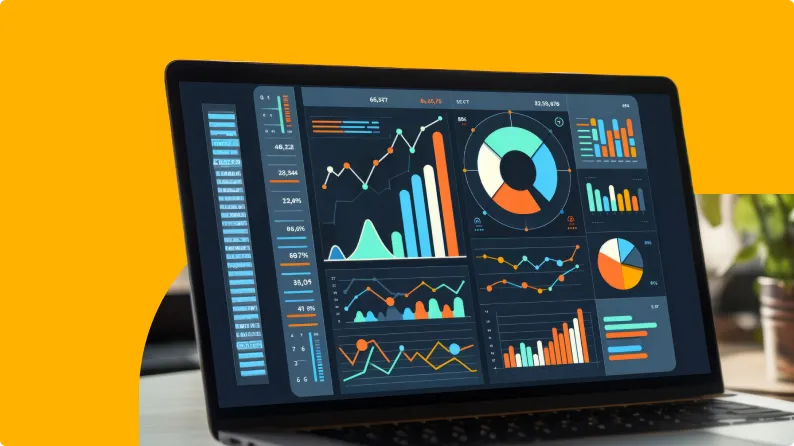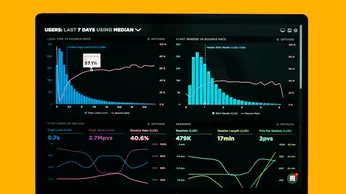On this page
What Is Sales Effectiveness And Why Is It Important?
Sales effectiveness is the ability of a business to identify, prioritize and execute the right sales task at the right time to drive best possible outcomes at each stage of the customer journey. This involves systematically improving the synchronicity between planning, people and processes so that they work at an elite level – predictably and sustainably.
The scope of sales effectiveness may apply to an individual sales person or an entire organization. The idea is to mindfully equip sales and GTM (Go To Market) teams with the right strategy, mindset and tools, thereby giving the business its best shot at achieving the success criteria it has set for itself. Most often, these criteria span acquiring new customers and retaining old ones, attaining quota targets, increasing closure frequency, contract size and deal volume, nurturing quality pipelines, scaling operations, ensuring profitability and generating revenue.
The ultimate goal is to build sales capabilities, accelerate growth and establish a sustainable competitive edge in a new reality environment that’s constantly in flux.
How To Define Sales Effectiveness?
Sales effectiveness constitutes a foundational focus for sales leaders to improve sales performance and drive growth by converting top customers at a high clip. Sales effectiveness involves identifying key competencies amongst sales members, constructing metrics to incrementally enhance strategy and productivity, and nurturing a data driven culture that aligns team enablement and operations. To perform at a consistently high level of sales effectiveness, organizations must inculcate a ‘must win’ attitude that prioritizes big value accounts, high ‘win velocity’ and long term success.
Manoj Agarwal,
Co-Founder, XOXODAY
Sales effectiveness can mean different things to different things. You need to define what matters most to you, express that in quantifiable avatars, and design an effective performance box that makes it happen.
The smartest dashboard or the most granular spreadsheet won’t help if they throw light on areas that are irrelevant to the journey. Sales effectiveness isn’t about how much or how fast - it’s about what you do and how well you do it. It shifts the focus from running more drills to running the right kind of drills, from being busy to being smart, from hitting metrics to hitting targets – with purpose and intent.
Sales Effectiveness Is Often Confused With Sales Efficiency.
What’s the difference?
Sales effectiveness is doing the right things.
Sales success is when they both happen at the same time.
Sales efficiency measures aspects and activities like speed, expenses incurred and number of accounts converted. If you are sending double the number of emails in a day and winning far more demo requests than your peers in a day – all the while keeping costs low - then you are an efficient sales person.
But are you an effective one?
The answer depends on the kind of outcomes your efficiency is generating.
· If you are eliciting curiosity but from the wrong markets – that is, from audiences who your product is not meant to serve.
· If you are attracting enquiry from the right audiences but the leads are not converting into ‘test drives’ or purchase decisions.
· If your leads are purchasing but the deals are either small in size or too infrequent.
If any of these – there can be several other situations in between - happens to be true, then there is evidently a disconnect between the boxes you are ticking and the boxes that matter to the business. Your sales function is efficient, but sadly, not effective. You have fallen into the infamous efficiency trap: Mistaking activity for achievement. Or, as some describe it, the art of doing the wrong things exceedingly well.
Sales effectiveness fixes this misalignment by looking past the illusion of vanity metrics, and zooming into areas and endeavors that directly drive results.
Sales effectiveness is touchpoint mastery.
Sales effectiveness is about pushing the deal forward at every touchpoint, and progressively moving to the next stage in the customer acquisition funnel. This entails a variety of customer interaction points like prospecting, lead generation, lead qualifying, client presentations, overcoming objections, terms negotiation, deal closure and customer retention. Sales effectiveness aims to build a high level of mastery across each of these phases and functions.
Sales Efficiency Vs Sales Effectiveness
Sales Effectiveness Is All About Hitting The Sweet Spot.
When goal, strategy, resources, teams and efforts are in synchronous motion – much like an expertly choreographed opera or a flawlessly conducted concert - both sales efficiency and sales effectiveness tend to be high. In that sense, sales effectiveness can also be described as sales efficiency operating in the right context and direction.
The 7 Key Cogs Of Sales Effectiveness.
Make sure each flows seamlessly to the next to get a high performance sales mechanism going.
· STRATEGY →
Goal informed and research driven strategy empowered by predictive analysis for smart decision making and planning.
· FRAMEWORKS →
Frameworks to articulate what success looks like and foster consistent behavior.
· METHODOLOGY →
Methodology instilling discipline via a system of principles and best practices to create a unified seller language and provide an integrated roadmap clarifying actions.
· APPROACH →
Approach to make methodology actionable and scalable with real time tactics and seamless tech integration.
· PROCESS →
Mature process logically mapping out sequence of stages – from prospecting to follow up, with entry and exit routes - to make approach repeatable and ensure precision execution.
· KPIs →
KPI’s to articulate desired outcomes and capture broad expectations.
· METRICS →
Metrics to achieve KPIs by validating micro actions.
Importance Of Sales Effectiveness.
Shifting consumer mindsets, disruptive new technologies and complex buying cycles means sales isn’t getting any easier.
Korn Ferry reports that revenue attainment has fallen 6% in five years, win rates are down 5% and 69% of sales leaders are apprehensive of skill gaps turning into hurdles.
Against that backdrop, sales effectiveness - the ability of both getting the horse to come to the water AND making it drink – takes over as the new holy grail of business.
Here are some of the standout advantages of a sales system that rarely misses its target.
1. The ability to hit quotas, convert prospects and accelerate deal closure with more consistency and less fluctuation.
2. Better utilization and ROI on manpower, infrastructure, resources, technologies and budgets.
3. Improved sales forecasting with authentic data for better strategy.
4. Proven methodology, resilient systems, repeatable outcomes.
5. A structured approach to complex deals that involve multiple decision makers.
6. Ability to isolate gaps, rectify inefficiencies and improve incrementally.
7. Success aligned culture: Empowered teams with better clarity, focus, purpose and a clear path to follow.
8. Faster ramp-up time for new joinees.
9. Higher customer satisfaction and loyalty.
10. Sustainable competitive edge – better placed to compete and win accounts.
11. Greater predictability in revenue and profitability - important considerations amongst stakeholders and investors for valuation projection.
How To Measure Sales Effectiveness?
Let’s look at the critical KPIs and key metrics that can help diagnose the health of the sales effectiveness of your teams, and point out areas that need improvement.
OPPORTUNITY QUALITY.
How valuable are the accounts that you have in your pipeline? This metric calculates deal quality and average deal size.
CONVERSION RATE.
This is the percentage of leads or prospects that actually translate into paying patrons within a specified period of time.
SALES VELOCITY.
How fast is your pipeline converting into revenue? This metric directly ties into speed of cash realization.
SALES CYCLE LENGTH.
How long does an average deal take to close? Shorter sales cycles indicate higher sales effectiveness, while longer ones may be a symptom of inefficiency, delays and too much back-and-forth. That said, in a time when B2B buying cycles (high value enterprise deals in particular) can be multilayered, ambiguous and involve several entangled variables, it may be hard to decode the lessons captured by this KPI.
SALES EFFICIENCY.
This is a foundational ratio that measures the amount of revenue your sales force is raking in for every dollar that’s going out. This metric is a key input in calculating ROI.
WIN RATE PERCENTAGE.
How effectively are you converting the right opportunities? The formula for Win Rate Percentage is: (Total number of closed and won deals) / (Total number of closed deals) X 100. To increase your Win Rate, double down on what’s working, correct what isn’t, and relook fundamentals like product features, pricing and positioning. No team converts every opportunity that comes its way, but as long as yours is constantly getting better - winning bigger deals and losing smaller ones – you’re on the right track.
LEAD QUALITY.
Generating a lot of leads that carry low intent and make sales teams struggle needlessly over accounts that will ultimately not convert, is a highly ineffective way of running a sales function.
REVENUE FROM EXISTING VS NEW CLIENTS.
Acquiring new clients can cost five times more than retaining old ones. To turn revenue more predictable and hike up ROI, make loyalty a priority target.
REVENUE FROM BEST CUSTOMERS.
The Pareto principle says 80% of your business will come from 20% of your customers. While that ratio may vary from organization to organization, the point remains that a select number of clients may be contributing to a disproportionately large share of your revenue. It is important to identify who they are, and direct your best efforts there.
ACTIVITY VALUE.
Which activities are driving the maximum impact? This metric helps you separate activities that drive desirable results – be it revenue, relationships or other parameters – from those that merely eat into your time and resources. For example, effective cross selling and upselling can lift activity impact substantially, since they demand relatively little additional effort to drive additional revenue. Sales professionals who actively engage in upselling (91%) and cross-selling (87%) end up contributing to 21% of company revenue each.
CUSTOMER ACQUISITION COST (CAC).
How much are you having to spend to win an account or convert a buyer? CAC lets you understand costs of operation, and is a metric that directly influences profitability. The trick is to lower CAC without hurting quality of leads and pipeline.
CUSTOMER LIFETIME VALUE (CLV).
How much is an association with the customer worth to the business over the entire period of the relationship? A high CLV-to-CAC (customer acquisition cost) ratio reflects positive ROI, robust business health, and high sales effectiveness.
CUSTOMER ATTRITION RATE.
This is the speed at which users are ‘dropping off’ the cycle, and ceasing to be paying customers. The calculation for Customer Attrition Rate is: (Number of Clients Lost / Overall Customer Count) X 100. Customer attrition rate and sales effectiveness are inversely proportional: High attrition maps to low effectiveness. While customers may stop visiting for an entire variety of reasons, a well planned loyalty program can help rein in the leak. As a bonus, repeat customers spend 67% more than new customers.
QUOTA ATTAINMENT.
The classic metric of sales team efficiency works well as an indicator of sales effectiveness too. This metric shows the percentage of your team that’s hitting their quotas. A number that’s low can indicate flaws in talent-role alignment (amongst other factors), and is bad for team morale. As you recognize and reward rockstars, identify members who may need help and investigate gaps that need fixing.
REVENUE GROWTH.
This, along with sustainable profits, is the holy grail of a typical sales department. Sales effectiveness is all about incremental and consistent growth in revenue.
How To Increase Sales Effectiveness?
Whether you’re a startup breaking into new markets or a well-established player in your niche and category, there’s always room for improvement. Optimizing for sales effectiveness is how you lift benchmarks and outcomes on an ongoing basis, and turn failures into success. Here are some key interventions that can measurably enhance the effectiveness of an organization’s sales function.
Planing Go-to-market Well.
Every moving part should be in place before you begin. When the different cogs of your GTM don’t align, execution suffers. Sync workflows, grease friction points and streamline processes to create a performance matrix that lets you tick important boxes routinely. Plan the approach minutely so that sales folks have a crystal clear picture of how to conduct their efforts and hit the spot from day one.
- Basics first: Ensure you have a good product-market fit and that the 3 Ps of product, price and place are in place.
- Do the research on markets, competitors and prospects. Get this wrong, and your quest for sales effectiveness will be stillborn.
- Be it growing revenue, expanding markets or retaining accounts, be clear on non-negotiable big goals: They’re the ones that will dictate how the other cogs and pieces are designed.
- Turn your big business goals actionable by translating them into sales targets and team quotas.
- Thrash out a strategy that connects objectives, capacities and tactics intuitively.
- Create a differentiated and appealing value proposition for your product or service.
- Make sure your approach carries objectivity – subjectivity balance: A hybrid of science and data on one hand, and intuition and experience on the other.
- Embed a repeatable process spanning every stage: Needs assessment, presales and prospecting, pitch and presentation, objection handling, negotiation, closure and follow-up.
- Never be in two minds about whom you are selling to; target demographics and ideal customer profiles (ICP). This will let you master the sweet intersection of effort and opportunity, create better customer experiences (here’s why CX matters) and improve conversion rates. Build client personas consultatively by involving marketing, sales and other functions to ensure systems and endeavors advance in lockstep.
Understanding The New Customer.
B2B buyers today are far less dependent on the seller compared to predecessors. They prefer self-directed research; trawling industry reports, case studies, 3rd party reviews and inner circles such as workplace intranets and social media groups to gather information and form opinions during the discovery stage.
A study by McKinsey shows that 70% of buyers actively dig around online before making a decision, and nearly 77% of them expect access to online resources. Note to sales leaders: this logically includes websites, product guides and digital knowledge assets of the company they might potentially buy from - yours).
To quote from Korn Ferry’s website, “Buyers now view sellers as mere facilitators of transactions, with less than a quarter of corporate buyers engaging sellers early in the process.” In fact, 75% of B2B buyers would prefer an altogether rep-free sales experience.
The modern buyer is also spoilt for choices. The increasing interconnectedness of markets gives them greater access to services and suppliers than ever before.
Conditioned on ‘Amazon like’ buying moments, the new buyer can be highly discerning, preferring experiences that are tailored to their unique persona. A Linkedin research reveals 83% of Millennials in B2B decision-making roles believe their personality influences their purchase decisions. Non conformity with expectations can prove costly for businesses. 55% of consumers in a PwC Customer Loyalty Survey confided they would stop buying from a company after a few ‘bad experiences’.
What does all this mean for the modern seller? That the margin for error is very small, and that understanding the psyche of the modern buyer must get top priority.
Steps that can help:
· Conducting market research to comprehend customer personas deeply.
· Analysing online metrics and parsing large datasets to decode buying trends and user behavior.
· Leveraging machine learning algorithms to hyper-personalize experiences.
· Developing integrated, omnichannel strategies that cater to reticulate and unpredictable customer journeys across physical outlets, mobile apps and online platforms.
· Creating compelling cross-platform content assets and initiatives that can engage and convince the well informed, new age buyer at every touchpoint.
· Being a selfless and trusted partner, not a ‘seller with an agenda’. This includes (A) Adopting an empathetic and accommodating approach that is not pushy, is genuinely willing to help, and is always accessible. (B) Anticipating needs and being prepared with the right information at the precise moment it is needed (C) Being insightful, authentic and effective with opinions.
· As you build trust and connection with customers, pivot to a consultative selling style to get a closer understanding of your customer’s journey and pain points, which will help you craft deeply personalized solutions.
· Adopt strategic account management practices that prioritize customer expectations, solving problems and establishing rewarding, long term relationships.
Team Enablement: Setting Up Your Sales Armies For Success.
Behind every effective sales program lies leaders dedicated to empowering their GTM heroes, sales warriors and revenue generators. In a survey, 84% agreed enablement is integral to operating more efficiently. Indeed, over 80% of organizations have prioritized sales enablement as a competitive, buyer-first strategy. They have good reason to. 71% of B2B buyers feel sales reps lack adequate knowledge of their business needs.
Master these areas to keep your sales teams sharp:
- Foster a culture of empowerment, accountability and improvement.
- Conduct regular audits of strengths and weaknesses, and map it to your broad business goals to understand where you stand.
- Ask members where they are struggling and close the gaps by plugging in constructive feedback and ongoing coaching: Be it mentor guidance, peer nudges or the perspectives of external experts. Make your coaching and training initiatives engaging, deliberate and methodical. Organizations with coaching programs enjoy considerably higher win rates than counterparts who give it a miss.
- Break your coaching under three categories: Classic techniques, customer relationships and sales tech.
- Plugging in case studies and success stories can lift the effectiveness of an organization’s coaching efforts.
- Consider creating mini teams by pairing veteran players with rookies to shorten the learning curve and create a lively balance of experimentation and experience.
- Dig deep into data analytics for signs and signals.
- Record client sessions, calls and email conversations.
- Centralize tech and tools to ensure teams spend less time searching.
- Prioritize process adherence.
- Democratize access to data and dashboards.
- Create personalized improvement paths that take into account the strengths (experience, track record, passion zones) and weaknesses of every member in your sales department.
- Assign sales territories strategically. A tested approach is to assign most promising territories to high performers to increase the probability of closing big ticket deals and build revenue on aggressive mode.
- Ensure efforts complement and augment one another (instead of cancelling themselves out) via cross-functional teamwork, seamless marketing-sales alignment, and shared goals.
- Support reps with top notch resources - battlecards, playbooks, AI content and others - to facilitate deep discovery and effective engagement across the customer lifecycle journey.
- Equip sales teams with the context and lens that can make for effective value articulation, create positive customer moments and close deals with confidence.
- Fire up your team’s competitive spirit, ensure engagement levels don’t drop and get low performers more involved with gamification techniques. An overwhelming number of sales directors surveyed said gamification had a positive impact on their sales numbers and revenue.
Did you know Xoxoday Compass lets businesses integrate AI powered gamified incentive plans into their sales processes with fun contests, customizable challenges and leaderboards to help teams close more deals faster?
BOOK A DEMO NOW
- Don’t drown in the sea of data, metrics and KPIs – too much of it can cramp the team’s natural style and slow down progress. At any given moment, prioritize only the ones that will help you achieve your goals fast. Crush the big targets, and the rest will take care of themselves.
- Collaborate with frontline sales folks to build relevant and realistic KPIs that carry hot-off-the-barracks learnings and insights.
- For true sales effectiveness, your KPIs must be aligned with strategy, objectively measurable and capable of improvement.
Making Tech An Ally.
‘Tried and tested’ may not always work in an age where technology is changing the way we work at never-before speeds. Companies must constantly find smarter approaches to negotiate curveballs and outpace rivals, and one way to do that is to unlock and embrace the true potential of technology.
Make a minimum level of tech familiarity mandatory across roles. Build your organization’s tech chops through tech training. Deep integrate tech stacks within workflows and contexts. Leverage machine learning models to get a second opinion whenever in doubt.
In a survey, 99% of respondents agreed sales enablement platforms made their jobs easier. Train teams on the right tools and platforms like CRMs to automate ‘busywork’ (such as scheduling, follow-ups and lead nurturing) which will allow you to shift the focus back on core tasks. An underrated super-power of CRMs is their ability to nurture leads effectively – which can lead to a 20% increase in sales opportunities versus non-nurtured leads.
Blend traditional techniques with AI tools to make goal-setting more realistic through analysis of historical behavior, pattern identification (Which lead sources carry the best intent? Which products and markets are driving the most revenue? Which sales tactics have proven to be the most effective for different customer segments?) and predictive analysis. Sales professionals employing AI witness higher response rates, while 74% of teams using AI-powered CRMs report increased productivity. AI can also help the sales team hyper-personalize messaging for better customer engagement, streamline workflows and evolve to a more data driven decision making framework.
Did you know Xoxoday Compass lets sales teams tap into the power of technology to simplify sales management end-to-end?
· Create a single source of truth by integrating with various scattered systems, platforms and databases.
· Replace laborious spreadsheets and legacy systems with automated solutions for commissions, performance and ROI management.
· Provide tools for tracking and displaying sales performance and publicly recognizing wins with personalized recognition curated from over 10Mn rewards options.
Building An Efficient Core.
Only 47% of B2B sales organizations are hitting their targets. Which won’t surprise many, since research reveals that sales reps spend only about 37% of their time actually selling. The rest of the clock is taken up by activities like managing tools and tech stacks (70% of SDRs say they are overwhelmed by the number of tools), travel, meetings, admin and other non-selling chores. This is causing burnout in sales teams at an alarming rate, which is one reason why efficiency should be a key priority for organizations.
At its broadest and simplest, sales efficiency is a calculation of revenue generated vis-à-vis dollars spent. High efficiency – operating in the right environment - translates to a culture that’s naturally focussed on high ROI activities, always building meaningful bridges with customers and consistently operating at a high level of sales effectiveness.
Set SMART goals for teams and involve them in the planning process to build trust early. Ensure that the process agreed upon is being followed consistently. Create a daily chart of sales tasks to ensure reps hit their day with 100% clarity on what needs to be done. Communicate targets clearly, check-in regularly to review progress, and iteratively refine operations based on real world learnings.
Embracing Outsider Perspectives
Few techniques deliver the kind of rational and objective evaluation of status-quo than the unbiased opinion of someone who, while being well versed with the ecosystem, is not part of the system. A third party view will not only shake the team out of any encroaching complacency, but also help spot lacunae and growth paths that may have been in the blind spot so far.
Signs Your Sales Effectiveness Needs An Upgrade.
While sales effectiveness is an essential business DNA that must be pruned and primed all through the year, there are some signals that indicate yours need an immediate review (and rethink).
Some of them are:
· Teams are losing key opportunities at a worrisome rate, and you don’t have clear evidence or understanding of why.
· Lack of clarity or agreement on who your best (and worst) customers are, or how their personas and challenges look like.
· Slow rate of new customer acquisition.
· Deal sizes are small - and sales teams unable to locate, nurture or convert high value contracts.
· Customer relationships are being neglected with sales reps focussed on transactions and deal closure.
· Departments are working in isolation without interoperability, locking up vital data and insights in silos.
· Lack of collaboration is blocking free information exchange, feedback flow and lost opportunities in mentoring and coaching, be it leader-to-peer or peer-to-peer.
· Teams are burnt out, laggards have lost interest and even rockstars are frustrated (what makes it worse is that you know they are capable of great things).
· Sales cycles are eye-wateringly protracted with deals sucking too much time, effort and resources to mature and fructify.
· Incentive plans are opaque and payouts don’t happen on time, leading to grievance and resentment.
·Sluggish revenue growth with low profits.
Did you know Xoxoday Compass simplifies sales compensation planning with a secure, scalable and enterprise grade solution that
· Automates your entire sales commission process
· Communicates compensation in real-time
· Provides actionable insights
· Makes accurate, on-time payouts to keep sales teams motivated at all times.
Xoxoday Compass reduces commission processing time by 95%, saves 20% on incentive budgets and leads to 80% increase in sales productivity. It is endorsed by leading organizations globally like Mercedes, AT&T, Coca Cola and others.
What’s Worth Doing, Is Worth Doing Well.
Let’s face it: If you’re not closing those deals, it means your rivals are. Turn the tables by evolving from a sales structure that’s run on afterthought to a well-oiled competitive edge. Remember, an efficient sales team that prioritizes the right actions is an effective sales team. Start building yours today.
If you have invested in a sales function, you might as well master the formula of success.
To transform your sales function into a revenue accelerator, talk to an expert at Xoxoday Compass today!















